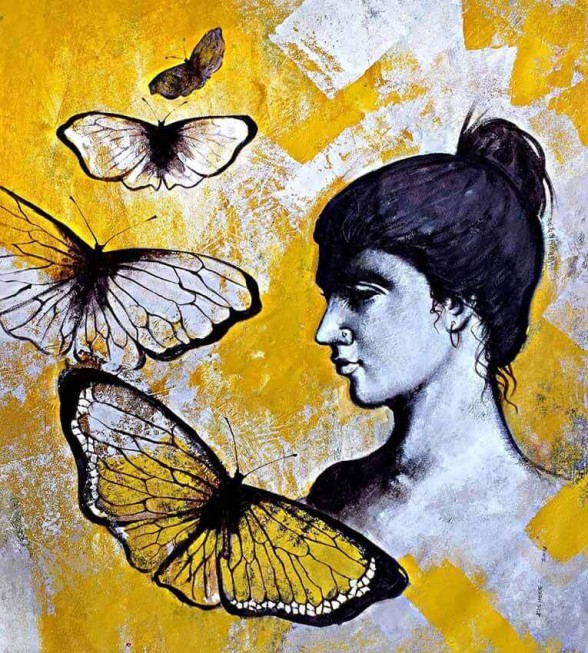History of Art: How do Indian Art Trends moved from Traditional to Modern Art?

As humans, we have always been indebted to evolution. We have come a long way from being Apes to the 21st-century humans. Everything that we have today has seen development. Even the art we create today is the result of the change, Indian modern art also finds its roots in traditional Indian art.
Indian art has evolved. Each century added various facets to the art of today- modern art. In this article, we shall touch upon all the monumental centuries that have shaped our modern-day art and will discover that it's essential to know the history of anything before we enjoy, its fruits in the present.

Ancient Indian Art
Indians have incorporated art in their lives since 3000-1000BC, the time of Indus valley civilization. Though the art was not too refined the mere diagrams of their drainage systems and the other paintings are the first ruins of art found in ancient time. Never before there had been a time when architectural designs were so aesthetically pleasing as well as ingenious.
Mughals Contribution
The Islamic religion and Mughals contributed significantly to the field of art. From the paintings of the emperors to their wives and their kids, their contribution to art brought opulence. Due to their Islamic roots, their paintings also had inscriptions in Urdu and had pictures of mausoleums in them. The extravagance in the taste of emperors were for all to see and envy but also, drop their jaws in awe. Such depictions popularised the use of vibrant and contrasting colours.
European Contribution
With Vasco De Gama entering the port of Goa, Indian Art also got acquainted with the European world. These painting saw the depiction of Britishers in the pictures, displaying the tyrannical attitude of the Britishers, who held a dominant position in the society. Raja Ravi Varma was the earliest artist to employ the techniques of the foreigners in his paintings and was the primary influence in establishing the Progressive Artist groups.
Even though he only painted scenes from the Mahabharata, and depicted the perception and plight of women in society, he started a more progressive way of approaching art. It happened back in the eighteenth century. Art became a symbol for national unity and the strong underlying feeling against the oppressive regime. It brought together people from different regions, colour and languages as they all could commonly identify with the imagery used in such paintings.
Post Colonisation Period
This period saw the formation of Progressive Artist Groups. Many leading artists of the time became part of this committee, wherein artists chose the path of modernisation in art and indulged in abstract art.
All this began in the nineteenth century, and its influence grew rigorously in the following centuries. The artist then began painting the expression and sentiments of the century than the traditional paintings of the devotee and their lords or scenes from our Hindu mythology.
Twentieth-Century Period
This phase saw the emergence of artists like M.F Hussain, who broke all the traditional contours of the world of painting and art. He and many other artists painted abstract art, leaving the observer perplexed by the complexities and depth of these paintings.
They allowed the observer to think beyond the boundaries of their canvas and inspired them to use their imagination to find the most appropriate narrative for the art pieces.
Modern Day Indian Art
Today, there is immense acceptance for all kinds of artists, be it expressionist, impressionist, abstract artist, or art collector. There is no restriction on the sort of Indian paintings that should be drawn, and artists have complete freedom to bring their wild imagination to life on the canvases. There is a huge market for such paintings as people are getting more and more attracted towards rare unique paintings.
Conclusion
Knowing the history opens horizons to many more facets of art that you might not have known. Indian Art has the most abundant history and traces back to around 1200BC. We have a deep connection with the world of art and paintings.
Thus, as Indian modern artist, one should learn about the evolution of Indian art, and try to pay homage to the legendary artists in some way or the other, by using our paintbrushes to create something marvellous and thought-provoking.
Paintings you might be interested in:
